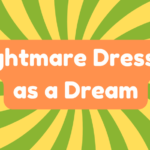"Dressed to kill" refers to an intentional and striking approach to fashion, aiming to attract attention and admiration. The phrase likely originated from "dressed to the nines" in the 1800s, suggesting a connection to elite fashion standards. Examples highlight its social implications, where bold attire often reflects deeper insecurities or desires for validation. This expression remains relevant, emphasizing cultural commentary on self-presentation. Exploring further, readers can uncover more about its nuances and historical significance.
Synonyms
When exploring the concept of being "dressed to kill," it becomes essential to contemplate alternative expressions that convey similar meanings. Understanding these synonyms enriches the language of fashion and highlights the artistry behind fashion statements that function as attention grabbers. Potential alternatives include:
- Dressed to impress
- Fashionably adorned
- Stunningly attired
- Elegantly outfitted
These expressions reflect the essence of dressing elegantly to garner admiration. Each term encapsulates an intention to allure and make a mark, asserting a notable presence within the domain of contemporary style. Such expressions deserve critical examination for their implications on self-presentation.
Example of Sentences
Examples of sentences featuring the phrase "dressed to kill" illustrate its usage in varied contexts, showcasing both admiration and a sense of social commentary. This expression often emphasizes personal expression and bold fashion statements. Consider these nuances:
- Fashion choices can communicate confidence.
- A stunning outfit may serve as an external mask for insecurities.
- The phrase can reflect societal expectations on appearance.
- Dressing to impress can indicate deeper issues of validation.
Ultimately, "dressed to kill" embodies a complex relationship with self-presentation, where allure intersects with the subtle pressures of societal norms and individual identity.
Origin
The phrase "dressed to kill" has a somewhat murky origin that invites speculation rather than definitive answers. It is believed to be a modern evolution of "dressed to the nines," with first appearances traced back to the 1800s. The term "kill" suggests an allure that is both impressive and attractive, echoing the cultural significance of vanity and self-presentation throughout history. Some speculate its roots lie in social contexts of elite fashion or even notorious groups, reflecting the tension between glamour and superficiality. Ultimately, the phrase serves as a lens into historical associations with fashion's powerful role in personal expression.
Collocations
Collocations associated with the phrase "dressed to kill" reflect the nuances of its usage in everyday language. These phrases emphasize not only style but also the underlying motives related to attraction techniques and fashion statements. Some notable collocations include:
- Dressed to impress – highlighting the intent behind the attire.
- Dressed to attract – focusing on the allure of one's appearance.
- Dressed to dazzle – showcasing an extravagant display.
- Dressed to seduce – implying a calculated approach to appeal.
Such collocations reveal how presentation intertwines with social norms, suggesting a complex relationship between self-expression and societal expectations.
How to Use in Everyday Language
How can one effectively incorporate the phrase "dressed to kill" into everyday conversations? This phrase is often employed to describe individuals making bold fashion statements, typically those who aim to capture attention and admiration. It might be used when discussing social events, complimenting friends, or even critiquing fashion trends. However, it can serve as a subtle reminder of vanity and the desire for validation, especially among attention seekers. While it can be a fun expression, overusing it might diminish its impact. Consequently, integrating "dressed to kill" thoughtfully guarantees that it resonates meaningfully rather than becoming a cliché.
Why Is It Still Relevant Today?
Fashion has always played a significant role in society, serving as a canvas for self-expression and cultural commentary. The phrase "dressed to kill" remains relevant today due to its cultural significance and the ongoing evolution of fashion. In a world driven by images, individuals still seek ways to impress and affirm their identities through their attire. The phrase encapsulates the desire to stand out amidst the noise of trends and societal expectations. However, this pursuit can also highlight superficial values, sparking debate on authenticity versus façade. Consequently, "dressed to kill" reflects both admiration and critique in contemporary fashion dialogue.







